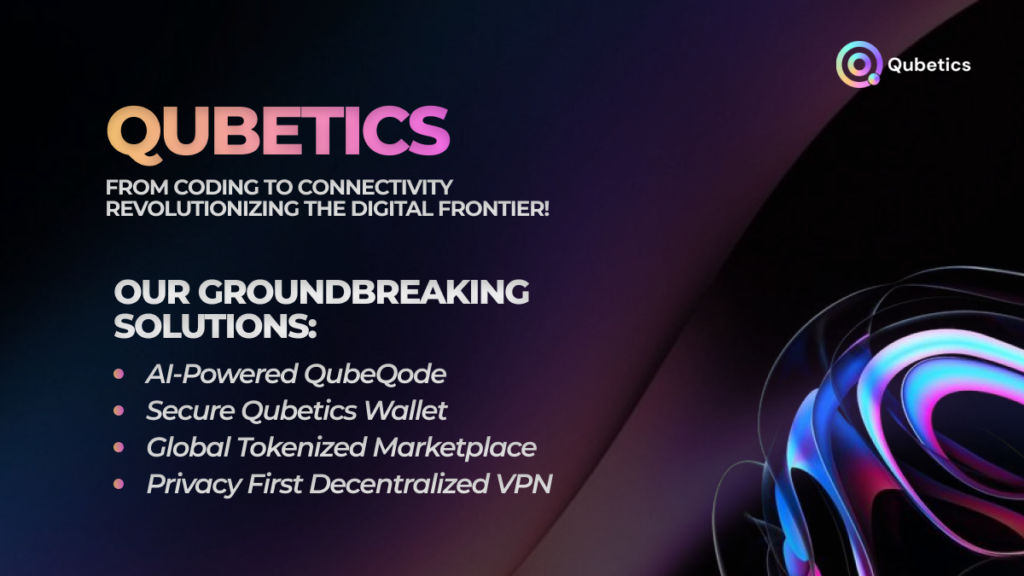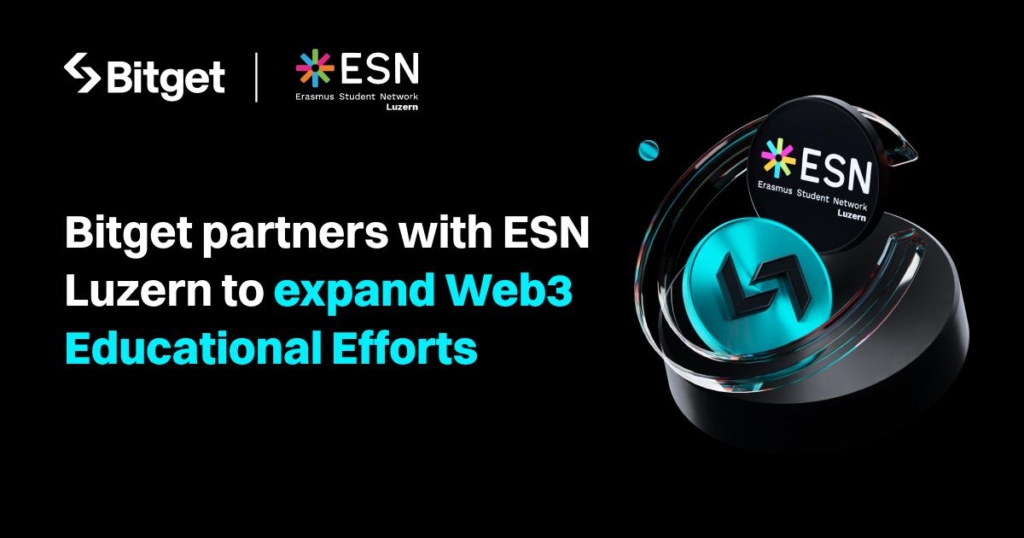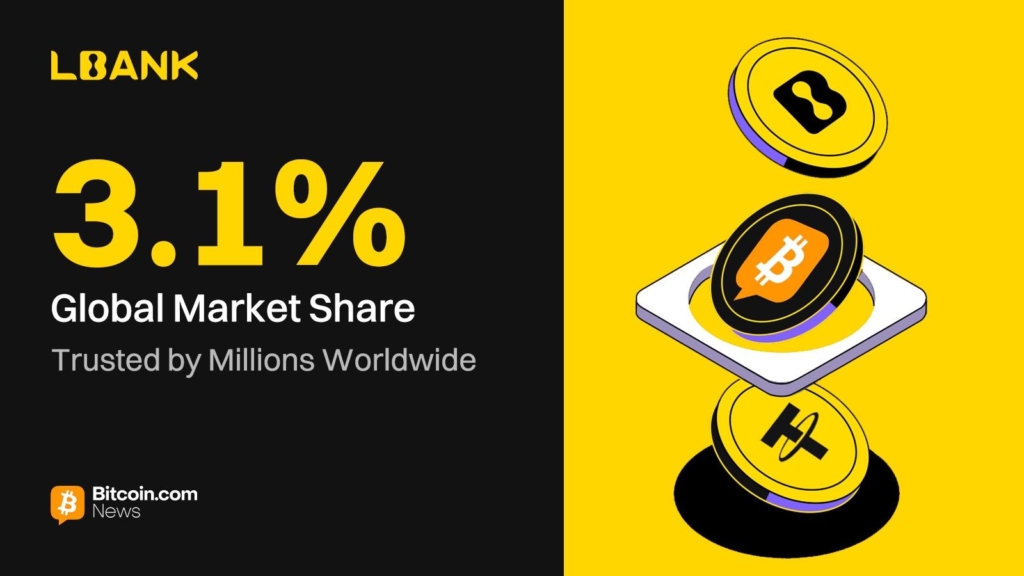In the ever-evolving world of cryptocurrency, staying updated with the latest developments is crucial. Recently, NEAR Protocol announced its ambitious plan to develop the world’s largest open-source AI model, aiming to merge blockchain technology with artificial intelligence to enhance scalability and user experience. This move signifies a significant step toward integrating AI into blockchain platforms, potentially revolutionizing how these systems operate.
Meanwhile, XRP has been making headlines due to increased activity in the application process for crypto exchange-traded funds (ETFs), especially following recent political shifts. The U.S. Securities and Exchange Commission (SEC) is anticipated to potentially approve several altcoin ETFs, including those targeting cryptocurrencies like XRP. Such developments could pave the way for broader adoption and investment in the crypto space.
Amidst these advancements, a new player, Qubetics ($TICS), is emerging with solutions aimed at addressing challenges that its predecessors have struggled with. By focusing on real-life applications and future-proofing blockchain and digital finance, Qubetics is positioning itself as a promising contender in the crypto arena.
Qubetics: Simplifying Blockchain Development with QubeQode IDE
Blockchain technology has long been perceived as complex, often requiring extensive coding knowledge and technical expertise. This complexity has been a barrier for many businesses and individuals looking to leverage blockchain solutions. Enter Qubetics, a project that’s turning heads with its innovative approach to making blockchain accessible to all.
At the heart of Qubetics is the QubeQode Integrated Development Environment (IDE), a tool designed to democratize blockchain development. Imagine a platform where you can build blockchain applications without writing a single line of code. That’s precisely what QubeQode offers.
The QubeQode IDE boasts a user-friendly interface featuring drag-and-drop components, allowing users to integrate pre-built functionalities like user authentication and token management effortlessly. This means businesses can quickly develop decentralized applications (dApps) tailored to their needs without the overhead of hiring specialized developers.
Consider a scenario where a company wants to implement a loyalty program for its customers. With QubeQode, they can create a blockchain-based system that rewards customers with tokens for their purchases. The drag-and-drop interface lets them set up the entire system, from token issuance to tracking customer rewards, without delving into complex coding.
Individuals looking to explore blockchain can also benefit. An artist, for example, might want to create and sell digital art as NFTs. With QubeQode, they can design a smart contract that manages the sale and ownership transfer of their art pieces, all without needing to understand the intricacies of blockchain coding.
As of now, Qubetics is in its 20th presale stage, having sold over 461 million tokens to more than 18,600 holders, raising over $12 million. The $TICS tokens are currently priced at $0.0667, with a planned 10% price increase in the upcoming 21st stage. This structured approach to the presale not only incentivizes early participation but also reflects the project’s commitment to transparency and growth.
NEAR Protocol: Pioneering AI Integration in Blockchain
In the dynamic world of blockchain, NEAR Protocol has emerged as a frontrunner by ambitiously integrating artificial intelligence (AI) into its platform. This initiative aims to enhance scalability and user experience, setting NEAR apart in the competitive crypto landscape.
In November 2024, NEAR Protocol unveiled plans to develop the world’s largest open-source AI model. This strategic move is designed to merge blockchain technology with artificial intelligence, creating a synergy that addresses some of the most pressing challenges in the industry.
One of the primary benefits of this integration is enhanced scalability. Blockchain networks often face limitations in processing a high volume of transactions efficiently. By incorporating AI, NEAR aims to optimize transaction processing, enabling the network to handle increased demand without compromising performance.
User experience is another focal point. AI can personalize interactions, predict user needs, and provide more intuitive interfaces. For instance, AI-driven analytics can offer users insights into their transaction patterns, helping them make informed decisions. Additionally, AI can assist in automating routine tasks, reducing the manual effort required from users and making the platform more accessible to newcomers.
The open-source nature of NEAR’s AI model fosters collaboration and innovation. Developers from around the globe can contribute to and benefit from the model, accelerating the development of AI-powered dApps. This collaborative approach ensures that the technology evolves to meet the ever-changing demands of the digital economy.
XRP: Riding the ETF Wave to New Heights
XRP has always been a major player in the crypto space, and recent developments suggest it’s about to level up. Following President Donald Trump’s election win, the U.S. SEC has seen a surge in crypto ETF applications, with XRP being a prime candidate for inclusion.
Crypto ETFs could open the floodgates for institutional investors, making XRP more accessible than ever. This could lead to increased liquidity and adoption, making it a strong contender in the evolving financial landscape.
With potential ETF approvals on the horizon, XRP stands to gain mainstream recognition, further solidifying its position as a key player in the digital asset space.
Conclusion
Blockchain is evolving, and projects like Qubetics, NEAR Protocol, and XRP are leading the charge. Qubetics is revolutionizing blockchain development with its QubeQode IDE, making it easier than ever to build decentralized applications. NEAR Protocol is pushing boundaries with AI integration, enhancing scalability and user experience. XRP is gearing up for potential ETF approvals, paving the way for institutional adoption.
For those looking to invest in the Best Crypto Presale to Buy for 2025, Qubetics ($TICS) presents a compelling opportunity. With its groundbreaking technology, strategic presale structure, and strong growth potential, it’s a project that deserves serious consideration. The clock is ticking, and early adopters stand to benefit the most.
For More Information:
Qubetics: https://qubetics.com
Telegram: https://t.me/qubetics
Twitter: https://x.com/qubetics
Frequently Asked Questions (FAQs)
1. What makes Qubetics ($TICS) the best crypto presale to buy for 2025?
Qubetics raised $12M, offering AI-driven blockchain solutions, fast transactions, and developer-friendly tools, making it a strong investment opportunity.
2. How does QubeQode IDE simplify blockchain development?
QubeQode IDE streamlines blockchain development with AI-assisted debugging, smart contract templates, and cross-chain compatibility, reducing complexity for developers.
3. What impact will NEAR Protocol’s AI integration have on blockchain technology?
NEAR’s AI integration enhances scalability, lowers transaction costs, and improves dApp performance, making blockchain networks more efficient.
4. Why is XRP gaining attention for potential ETF approvals?
XRP’s regulatory clarity, adoption in payments, and strong fundamentals make it a prime candidate for institutional investment through ETFs.
5. How does Qubetics compare to traditional blockchain projects?
Qubetics integrates AI, security, and developer tools, offering a more efficient and user-friendly ecosystem than conventional blockchains.
Disclaimer: Any information written in this press release does not constitute investment advice. Optimisus does not, and will not endorse any information about any company or individual on this page. Readers are encouraged to do their own research and base any actions on their own findings, not on any content written in this press release. Optimisus is and will not be responsible for any damage or loss caused directly or indirectly by the use of any content, product, or service mentioned in this press release.



